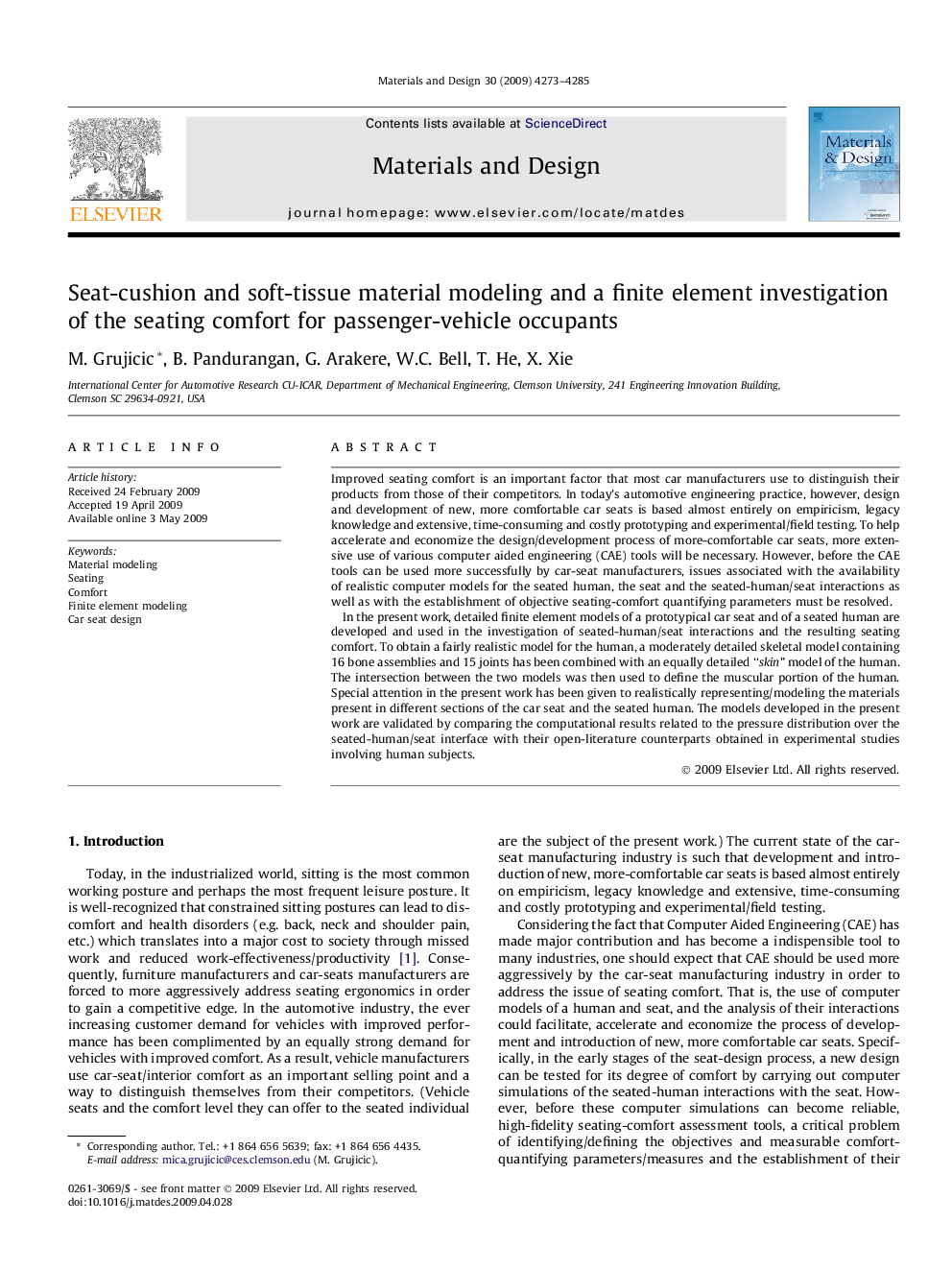| کد مقاله | کد نشریه | سال انتشار | مقاله انگلیسی | نسخه تمام متن |
|---|---|---|---|---|
| 832417 | 1470368 | 2009 | 13 صفحه PDF | دانلود رایگان |

Improved seating comfort is an important factor that most car manufacturers use to distinguish their products from those of their competitors. In today’s automotive engineering practice, however, design and development of new, more comfortable car seats is based almost entirely on empiricism, legacy knowledge and extensive, time-consuming and costly prototyping and experimental/field testing. To help accelerate and economize the design/development process of more-comfortable car seats, more extensive use of various computer aided engineering (CAE) tools will be necessary. However, before the CAE tools can be used more successfully by car-seat manufacturers, issues associated with the availability of realistic computer models for the seated human, the seat and the seated-human/seat interactions as well as with the establishment of objective seating-comfort quantifying parameters must be resolved.In the present work, detailed finite element models of a prototypical car seat and of a seated human are developed and used in the investigation of seated-human/seat interactions and the resulting seating comfort. To obtain a fairly realistic model for the human, a moderately detailed skeletal model containing 16 bone assemblies and 15 joints has been combined with an equally detailed “skin” model of the human. The intersection between the two models was then used to define the muscular portion of the human. Special attention in the present work has been given to realistically representing/modeling the materials present in different sections of the car seat and the seated human. The models developed in the present work are validated by comparing the computational results related to the pressure distribution over the seated-human/seat interface with their open-literature counterparts obtained in experimental studies involving human subjects.
Journal: Materials & Design - Volume 30, Issue 10, December 2009, Pages 4273–4285